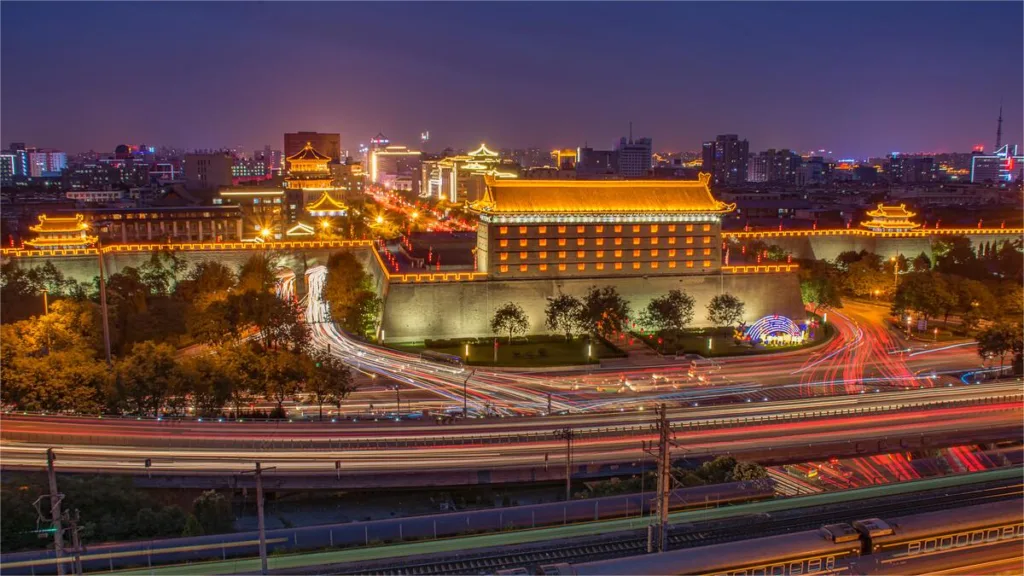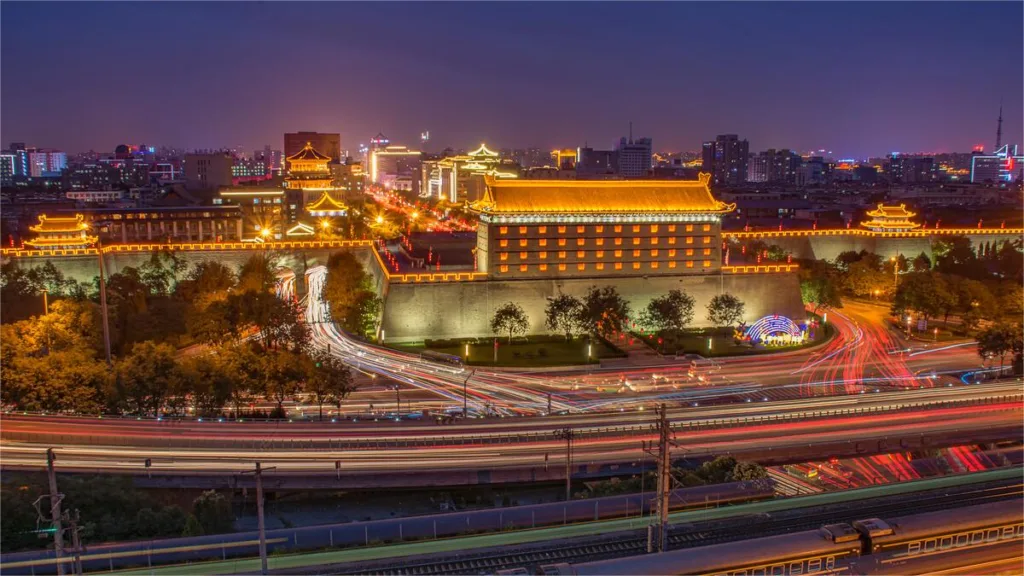5 feiten over Xi'an - dingen die je moet weten voordat je erheen reist


Nestled in the heart of China’s Shaanxi Province lies Xi’an, a city that serves as a living testament to the country’s rich and multifaceted history. From its ancient roots as the capital of numerous dynasties to its bustling modern metropolis status, Xi’an embodies a harmonious blend of tradition and innovation. As the starting point of the legendary Silk Road, this city has witnessed the ebb and flow of civilizations, leaving behind a wealth of cultural treasures and architectural marvels for the world to explore.
1. The Ancient Heart of China:
Xi’an served as the capital for over a dozen dynasties in Chinese history, earning it the title of the “Eternal City.” Its most famous iteration was as the capital of the Tang Dynasty, a period often considered the zenith of Chinese civilization. During this time, Xi’an, then known as Chang’an, was one of the most populous cities in the world and a global hub for trade, culture, and religion.
The city’s historical significance is evident in its architectural marvels, such as the ancient city walls. Built during the Ming Dynasty (1368-1644), these walls stand as some of the best-preserved fortifications in China, encircling the city center and offering panoramic views of Xi’an’s urban landscape.
2. Terracotta Warriors:
One of Xi’an’s most iconic attractions is the Terracotta Army, a vast collection of life-sized clay soldiers crafted over two millennia ago. Discovered in 1974 by local farmers, this archaeological marvel is part of the mausoleum of Emperor Qin Shi Huang, the first emperor of China. The Terracotta Army, consisting of thousands of soldiers, horses, and chariots, was created to accompany the emperor in the afterlife.
Each soldier in the Terracotta Army is unique, with individualized facial features and hairstyles, showcasing the incredible craftsmanship of ancient Chinese artisans. The discovery of the Terracotta Army has provided invaluable insights into the military, artistic, and technological advancements of the Qin Dynasty (221-206 BCE).
3. Culinary Delights:
Xi’an is a paradise for food enthusiasts, offering a delectable array of local delicacies that reflect its diverse cultural heritage. One of the city’s signature dishes is “biangbiang noodles,” named after the sound of the dough being slapped against the kitchen counter. These wide, hand-pulled noodles are typically served with a savory sauce and topped with ingredients such as chili oil, garlic, and minced meat.
Another culinary gem is the “roujiamo,” often referred to as the Chinese hamburger. This street food favorite consists of shredded pork or beef stuffed inside a freshly baked bun, creating a flavorful and satisfying snack. Xi’an’s culinary scene also includes mouthwatering dishes like lamb skewers, spicy soup dumplings, and savory pancakes, ensuring a gastronomic adventure for every palate.
4. Cultural Crossroads:
As the eastern terminus of the Silk Road, Xi’an has long been a melting pot of cultures, religions, and ideologies. The city’s vibrant history is reflected in its diverse architectural styles, from ancient pagodas and mosques to Buddhist temples and Confucian shrines. One of Xi’an’s most revered landmarks is the Great Mosque, a stunning fusion of traditional Chinese and Islamic architectural elements.
Xi’an’s cultural heritage is also celebrated through its numerous festivals and traditions. During the Chinese New Year, the city comes alive with colorful decorations, festive performances, and lively street parades. The Lantern Festival, held on the fifteenth day of the first lunar month, illuminates the night sky with thousands of intricate lanterns, creating a magical atmosphere for locals and visitors alike.
5. Modern Marvels:
While Xi’an is steeped in history, it is also a city at the forefront of innovation and progress. As a key player in China’s “Go West” development strategy, Xi’an has experienced rapid economic growth and urban expansion in recent decades. The city is home to numerous high-tech industries, research institutions, and universities, earning it the nickname “China’s Silicon Valley.”
Xi’an’s modern skyline is dominated by skyscrapers, shopping malls, and bustling commercial districts, reflecting its status as a regional economic powerhouse. Despite its modernization, the city remains deeply rooted in tradition, seamlessly blending ancient charm with contemporary sophistication.
In conclusion, Xi’an is a city of contrasts, where ancient history and modernity converge to create a captivating tapestry of culture, cuisine, and innovation. From the awe-inspiring Terracotta Warriors to the bustling streets filled with the aroma of spicy noodles, Xi’an offers a truly immersive experience that leaves a lasting impression on all who visit. Whether exploring its ancient landmarks or embracing its vibrant culture, Xi’an invites travelers to embark on a journey through time and tradition in the heart of China.